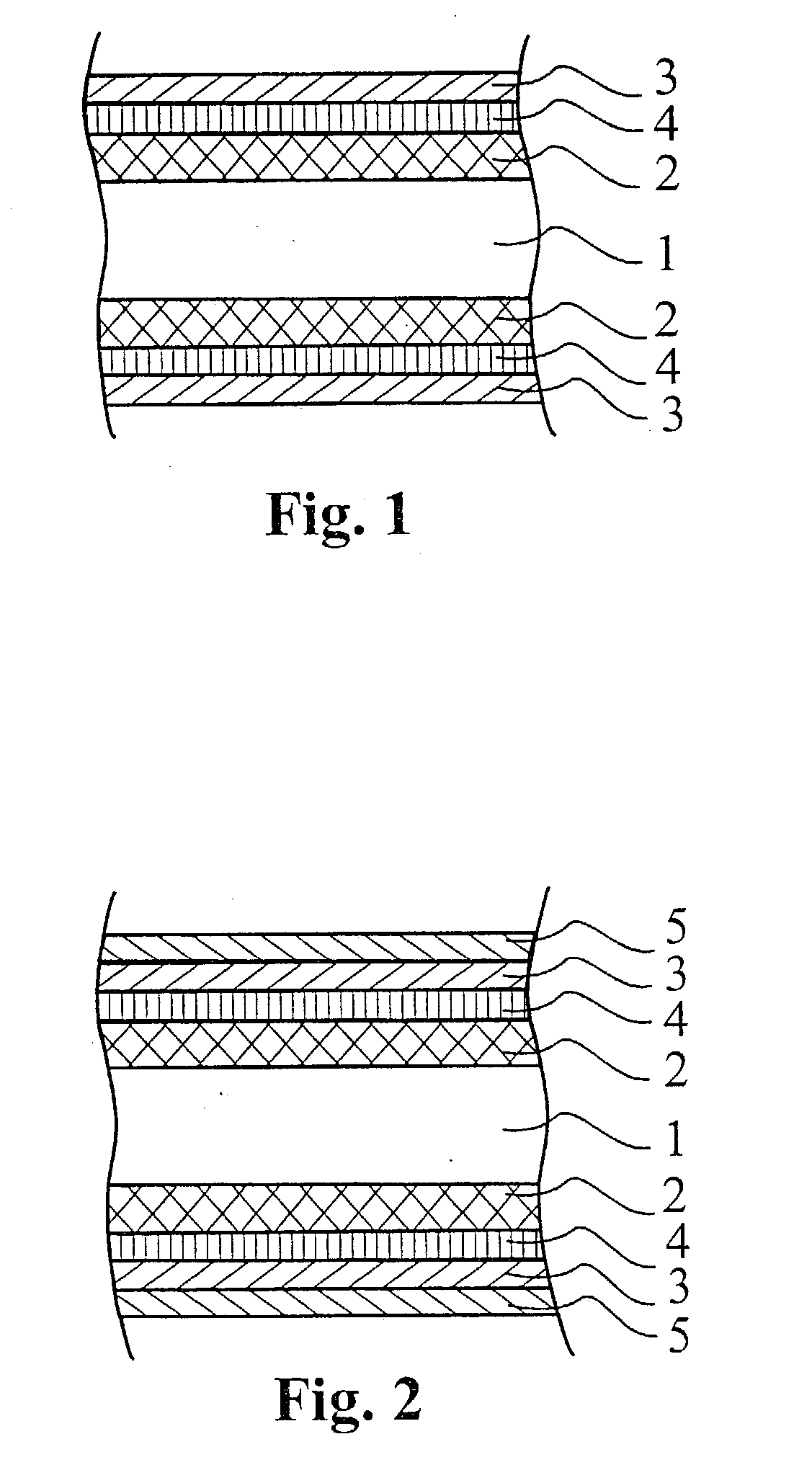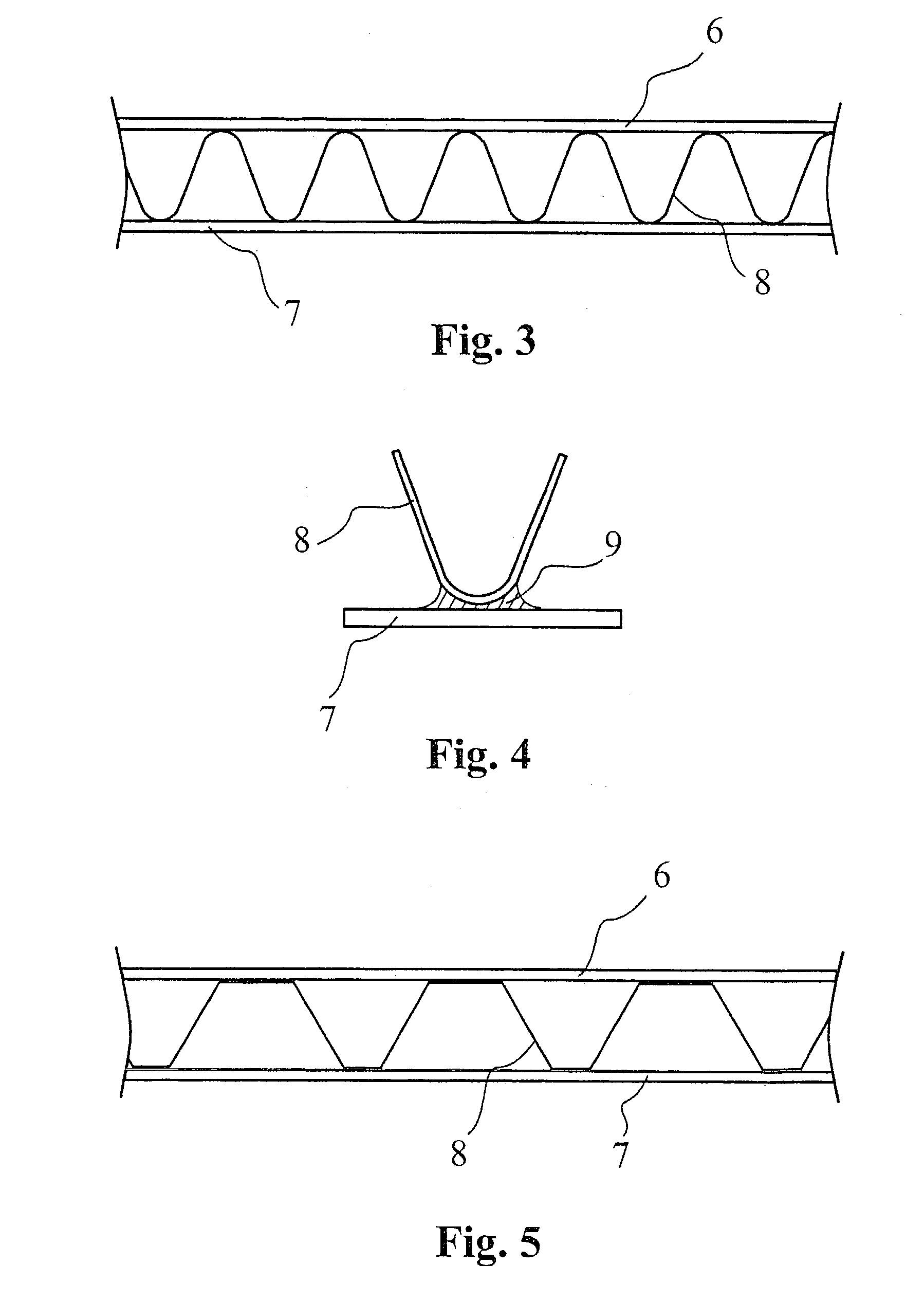Composite metal panel
a metal panel and composite technology, applied in the direction of manufacturing tools, transportation and packaging, solvent processing equipment, etc., can solve the problems of affecting the continuous process, and affecting the quality of the finished produ
- Summary
- Abstract
- Description
- Claims
- Application Information
AI Technical Summary
Benefits of technology
Problems solved by technology
Method used
Image
Examples
Embodiment Construction
[0079] On a laboratory scale testing was carried out on industrial scale manufactured aluminium brazing sheet manufactured from an AA3003 core alloy clad on both sides with an AA4045-series clad alloy, having a total thickness of 0.5 mm, the thickness of each clad being 10.9% of the total thickness. The composition of these alloys is given in Table 1.
[0080] The brazing sheet was treated by the following sequential process steps:
[0081] cleaning by immersion for 180 seconds in ChemTec (trade name) 30014 (a commercial alkaline (etch) degreaser), and rinsing,
[0082] alkaline etching for 20 sec. in ChemTec (trade name) 30203 (a commercial available alkaline etch cleaner), and rinsing,
[0083] desmutting for 4 sec. in an acidic oxidising solution, typically 25-50 vol. % nitric acid, comprising ChemTec (trade name) 11093 (a commercial available pickle activator) at ambient temperature, followed by rinsing,
[0084] zincate immersion using ChemTec (trade name) 024202 for 12 sec. at room temperatu...
PUM
| Property | Measurement | Unit |
|---|---|---|
| thickness | aaaaa | aaaaa |
| concentration | aaaaa | aaaaa |
| concentration | aaaaa | aaaaa |
Abstract
Description
Claims
Application Information
 Login to View More
Login to View More - R&D
- Intellectual Property
- Life Sciences
- Materials
- Tech Scout
- Unparalleled Data Quality
- Higher Quality Content
- 60% Fewer Hallucinations
Browse by: Latest US Patents, China's latest patents, Technical Efficacy Thesaurus, Application Domain, Technology Topic, Popular Technical Reports.
© 2025 PatSnap. All rights reserved.Legal|Privacy policy|Modern Slavery Act Transparency Statement|Sitemap|About US| Contact US: help@patsnap.com



